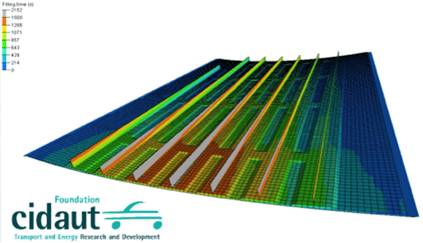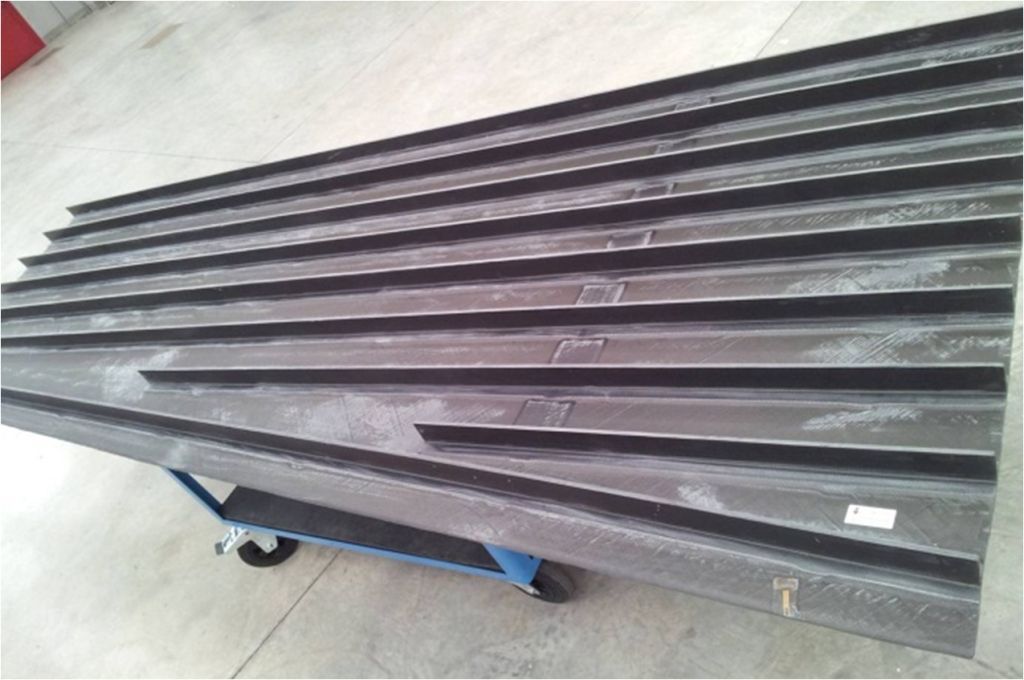One of the aims of Clean Sky is to develop new technologies for green manufacturing through Integrated Technology Demonstrators (ITDs) within the frame of both Green Regional Aircraft (GRA) and Eco-Design (ED) platforms, with the objective to realize low weight/eco-friendly aircraft components featuring competitive manufacturing costs. To achieve this purpose ALENIA AERMACCHI, (Leader of the GRA ITD and Member of the ED ITD) has conducted several studies and launched initiatives aiming to develop, optimize and industrialize Liquid Resin Infusion (LRI) processes. Executed out of autoclave (without pressure), the required solution shall reduce weight, related environmental impact and reduce life cycle costs, for the one shot manufacturing of wing box stiffened panels in composite material.
Under these initiatives, CIDAUT has led the research project named “Panel Liquid Infusion Technology” (PLIT), (Topic Manager SICAMB), which was launched within the GRA “Low Weight Configuration” domain, and was set up to provide a scientific approach to the physics of the LRI process by the development of a “process simulation numerical model”, to study resin flow during the impregnation stage.
The PLIT project consortium was led by CIDAUT Foundation, in charge of development and validation of simulation models and the test bench. ITRB was involved in the tools detailed design and PBLH International Consulting was in charge of dissemination activities.
The LRI simulation model set up by CIDAUT allows identifying potential causes for non uniform distributions of resin flow that may cause injection process faults like dry spots, poor saturation of the pre-form, partially filled composite parts and other defects. An outcome of the model is shown in figure 1. Filling time was used to correlate experimental and simulation results.
 Figure 1 Correlation between simulation and laboratory tests to determine permeabilities
Figure 1 Correlation between simulation and laboratory tests to determine permeabilities
Two main technical objectives were addressed by CIDAUT in the PLIT project:
- Development of an optimized LRI process simulation methodology especially suited for analyzing large parts and stiffened wing skin panels.
- Research to gain in-depth understanding of the flow phenomena based on experimental data and try-out.
The simulation model development required full understanding of the most significant phenomena in flow processing and development of dedicated methodologies in laboratory to characterize key material parameters of carbon reinforcements, epoxy resins and distribution media affecting resin flow in LRI processes (an example is shown in figure 2).
 Figure 2 Correlation between simulation and laboratory tests to determine permeabilities
Figure 2 Correlation between simulation and laboratory tests to determine permeabilities
Compared to a full 3D resin flow computation, commonly used in infusion processes analysis, the optimized numerical model developed by CIDAUT leads to significant reduction in computation time, while accurately predicting resin flow from the distribution media through the laminate thickness. The model is parametric and user friendly. Case studies can be parametrically defined depending on the resin viscosity parameters, carbon fiber permeabilities, infusion process parameters (resin pot and oven temperatures) and impregnation strategy (i.e. number, location, diameter and length of the inlet and outlet pipes, location of distribution media, sequential fillings, etc).
The simulation model was numerically verified and experimentally validated against experimental LRI tests, carried out in large stiffened wing panel demonstrators manufacturing. For that purpose, a complete test bench was manufactured and delivered to the topic manager premises in Italy, where infusion tests were conducted and filling times were accurately measured at critical locations along panels. Experimental characterization of permeability and viscosity parameters were key factors for achieving a good correlation between experimental and simulation filling times.
 Figure 3 Stiffened wing panel made by LRI (Courtesy of ALENIA AERMACCHIand SICAMB)
Figure 3 Stiffened wing panel made by LRI (Courtesy of ALENIA AERMACCHIand SICAMB)